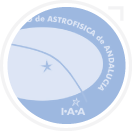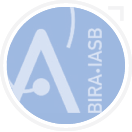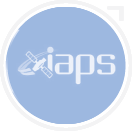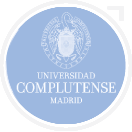Innovative tools
For the last ten years, a suite of American and European orbiters has provided an incomparable dataset regarding Mars atmosphere and climate. However, there are many identified areas where this dataset is expected to reveal additional information that traditional retrieval techniques employed up to now have been unable to address. Unlocking this information requires the use of novel retrieval techniques, with most of them being already applied for Earth studies that our consortium already started to adapt to the Martian case.

We will cover the following specific aspects of interest for the ExoMars TGO mission:
On Earth new multispectral methods for retrieving trace species such as CH4 and CO from orbiter observations are being deployed. Gas emission observed in distinct wavelength intervals provide important constraints on the vertical distribution of these gases. A typical example is CH4 observed in the thermal and in the near infrared (TIR and NIR). The NIR domain provides sensitivity on the vertically integrated column, whereas the TIR domain is mostly sensitive to the layers close the surface. Retrieval schemes using synergistic combination of both NIR and TIR spectral domains will be developed in this study. Most of the studies conducted to date have relied on single spectral domain retrieval approach. MEx data offers a unique opportunity to test the retrieval algorithms currently used on the Earth. We will use a combination of SPICAM, OMEGA and PFS nadir observations to elaborate simultaneous retrieval of H2O and CO.

The long path length in limb viewing geometry has the advantage of monitoring gas components with high accuracy even in low concentrations. Vertical profiles of minor gaseous species and aerosol properties can be retrieved from IR and near-IR spectra. The simultaneous measurements of vertical profiles of different atmospheric components can also allow the characterization of the photochemical process involved on Mars. MEx has two instruments on board for limb observations in emission, OMEGA and PFS, whose spectra spread for about five Martian years and all over the planet. UPWARDS has a significant interest in combining OMEGA data with PFS/MEx data because even if PFS has a poorer spatial resolution, it has a much better spectral resolution. The analysis of limb data in the IR and near-IR spectral range is complex because of the light scattering due to the presence of aerosols in the atmosphere. The multiple scattering in limb pointing can be particularly difficult to model because the most common techniques used in planetary science (e.g. plane- parallel, single scattering approximation) are not appropriate. We propose to developing/adapting Monte-Carlo codes to build a multiple scattering radiative transfer technique in spherical geometry. It will be based on the codes JACOSPAR9, SCATRD10 and SARTre. This would result in a powerful method to investigate not only the atmospheric gases but also to characterize dust properties, namely the number density and grain size distribution, as a function of altitude.

Sounding the upper atmosphere is a challenging goal, especially at altitudes where the densities are so low that the emissions no longer follow well-known laws, commonly known as the breakdown of non local thermodynamic equilibrium (non LTE), causing non-Planck emissions that cannot be described by the local temperature. This is normally a limitation since the classical inversion scheme assumes that either the temperature (therefore its Planck emission at this temperature) or the density is known. In the UPWARDS project we aim at the retrieval of atmospheric densities of CO2 and CO and temperatures in the middle and upper atmosphere of Mars from the daytime observations between 2.7 and 4.7 mm in the limb of the planet by two instruments on board Mars Express, OMEGA and PFS. CO2 and CO contain strong ro-vibrational bands that create strong atmospheric emissions in these IR regions during daytime due to well-known non-LTE pumping by solar excitation. The datasets have been unexploited to date due to the complexity of the non-Planckian emission. This investigation will combine state-of-the-art non-LTE models and line-by-line retrieval techniques to simulate these emissions and retrieve the abundances of the emitting species. This retrieval scheme is suitable for future observations in emission of the Mars upper atmosphere.
Advanced filtering methods will be applied to the in situ data obtained during EDL to reconstruct the entry trajectory and atmospheric state variables including winds, which is an innovative goal. Mars Science Laboratory (MSL) and ExoMars EDM carry both instrumented heat shields with forebody surface pressure sensors. The reconstruction methods based on inertial reconstruction and aero database are considered standard approaches for Mars entry, descent, and landing reconstruction, whereas reconstruction based on measurements of the forebody surface pressure is a novel approach. The pressure-based reconstruction technique allows for an atmosphere reconstruction to be conducted without assumptions on the vehicle aerodynamics. When combined with an Inertial Measurement Unit (IMU), the pressure measurements can provide wind and density estimates. To blend the pressure and inertial measurements together in a tightly coupled fashion, filtering techniques shall be applied. Besides commonly used Kalman Filter techniques, we will apply more advanced filtering methods such as Particle Filtering and Markov Chain Monte Carlo which consider both non-linear model equations and non-Gaussian uncertainty distributions to provide optimal state estimates with associated uncertainties. The developed algorithms will allow computing atmospheric state variables and possibly the winds for the first time directly from the measured surface pressures and integrated accelerations and angular rates. We will validate our methods with MSL flight data before applying them to ExoMars EDM.

EXOMARS EDM Landing
Summary outcome: A set of new data analysis and retrieval tools ready for exploitation of Mars Express data and for application to ExoMars. Major advances: synergistic algorithms for co-located observations, multiple-scattering for limb-observations in spherical geometry, Non-LTE inversion scheme in the upper atmosphere; new approach for Entry-Descent-Landing reconstruction.
Dedicated Work Package: WP1
Links to other UPWARDS activities: WP3, WP4, WP5, WP6, WP9
Related Papers
Encrenaz & Sotin, Planet. Space Sci., Vol. 53, pp. 961-961 (2005)
Bibring, J.P., J. Geophys. Res. , Vol. 112, E08S01 (2007)
Iwabuchi& Suzuki, paper presented at the AIP conference, Vienna, Austria (2009)
Vasilyev et al., paper presented at the 40 years French-Russian cooperation in space science conference, Moscow, Russia (2006)
Medrok et al., Geophys. Res. Lett., Vol. 34, L08807 (2007)
López-Puertas, M. and Taylor, F., Non-LTE radiative transfer in the atmosphere. Ed. World Scientific (2001) 13Piccialli et al., paper presented at the European Planetary Science Congress, Madrid, Spain (2012) 14Gazarik et al., paper presented at the IEEE Aerospace Conference,Big Sky, USA (2008)
Withers & Catling, Geophys. Res. Let., Vol. 37, L24204 (2010)
Van Hove & Karatekin, paper presented at the EGU General Assembly, Vienna, Austria (2012)
Karlgaard et al., paper presented at the 51st AIAA Aerospace Sciences Meeting, Grapevine, USA (2013)
Van Hove & Karatekin, paper presented at the 5th International Workshop on Mars Atmosphere: Modelling and Observations, Oxford, U.K. (2014)
Dutta et al., paper presented at the 50th AIAA Aerospace Sciences Meeting, Nashville, USA (2012) 20Doucet & Johansen, in Handbook of Nonlinear Filtering, eds. Crisan and Rozovsky (2011) 21Khan et al., Lecture Notes in Computer Science, Vol. 3024, pp. 279-290 (2004)
































